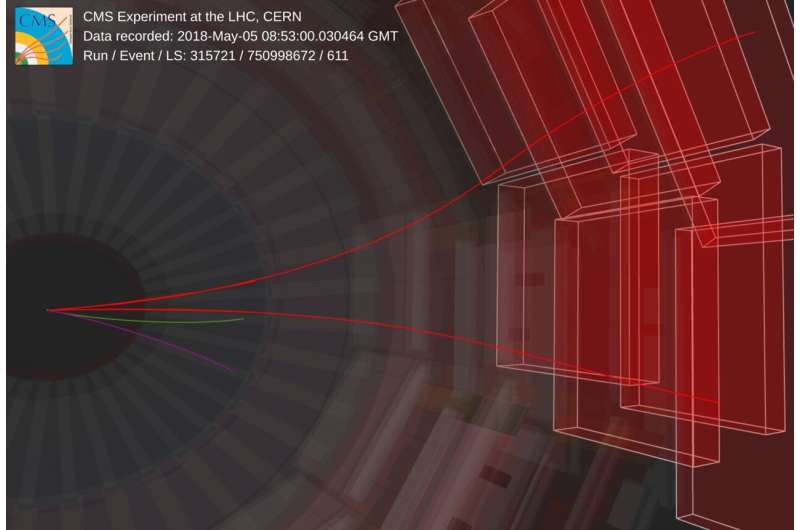This article has been reviewed according to Science X's editorial process and policies. Editors have highlighted the following attributes while ensuring the content's credibility:
fact-checked
trusted source
proofread
Shaking the box for new physics: CMS collaboration reports findings on rare B⁰ meson decay

When you receive a present on your birthday, you might be the kind of person who tears off the wrapping paper immediately to see what's inside the box. Or maybe you like to examine the box, guessing the contents from its shape, size, weight or the sound it makes when you shake it.
When physicists at the Large Hadron Collider (LHC) analyze their datasets in search of new physics phenomena such as new particles, they usually take one of two different approaches. They either perform a direct search for a specific new kind of particle, equivalent to tearing off the wrapping paper immediately, or use an indirect strategy based on quantum mechanics and its subtle wonders, similar to shaking the box and guessing what's inside.
At the annual LHCP conference that took place in Boston, the CMS collaboration reported how it used the second approach to look for new physics in a rare decay of a particle called B0 meson.
The physics process that drives the decay of a particle into lighter ones can be influenced by new, unknown particles, which might be too heavy to be produced at the LHC. This influence could change the decay process in ways that can be measured and compared to predictions of the Standard Model of particle physics.
In the same way as shaking the box containing your birthday present could give you a clue about what's inside, any deviation from the Standard Model predictions could give physicists a hint of new physics.
The decay of the B0 meson, which is made up of a bottom quark and a down quark, into a K*0 meson (containing a strange quark and a down quark) and two muons is particularly suited to this approach. This is because it occurs via a rare penguin transition that is highly sensitive to possible contributions from new heavy particles.
In its new study, the CMS team used all the data collected by its detector between 2016 and 2018, during the second run of the LHC, to "shake" this B0 decay "box." This box offers many ways to look for new physics. One is to weigh the box, i.e. measure the rate at which the decay occurs. Another is to take two twin boxes—for example, one corresponding to the decay into two muons and the other to the decay into two electrons—and check if they weigh the same.
In their new study, the CMS researchers looked at the shape of the box, i.e. they examined how the particles produced in the decay share the energy of the parent B0 meson and measured at what angles they fly away from each other. They then determined a set of parameters using these energies and angles, and compared the results with two sets of predictions from the Standard Model.
For most parameters, the results are in line with these two sets of Standard Model predictions. However, for two parameters, known as P5' and P2, and for specific energies of the two muons, the results are in tension with the two available predictions. Overall, the results are in agreement with the previous results from the ATLAS, LHCb and Belle experiments, while improving upon their level of precision.
Unfortunately, there is a charming, "naughty" kind of penguin that's crashing the birthday party: a charm quark that participates in the rare penguin transition. This complicates the Standard Model predictions and makes it difficult to draw a conclusion. To advance, researchers need better predictions, more data and improved analysis techniques.
More information: CMS Physics Analysis Summary: cms-results.web.cern.ch/cms-re … PH-21-002/index.html
Provided by CERN





















